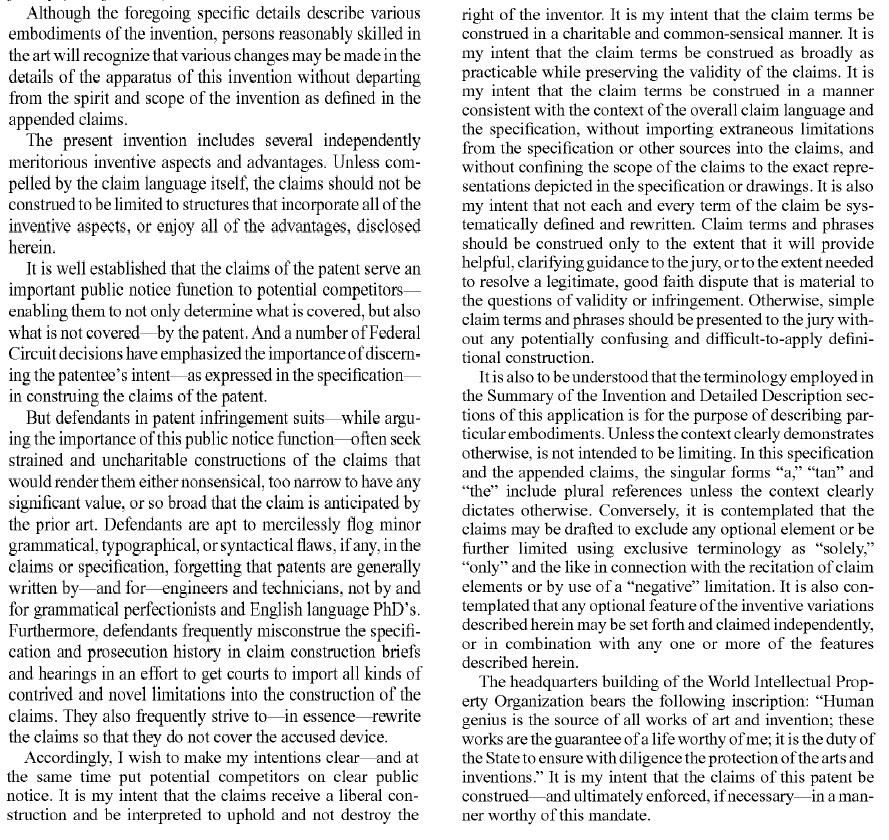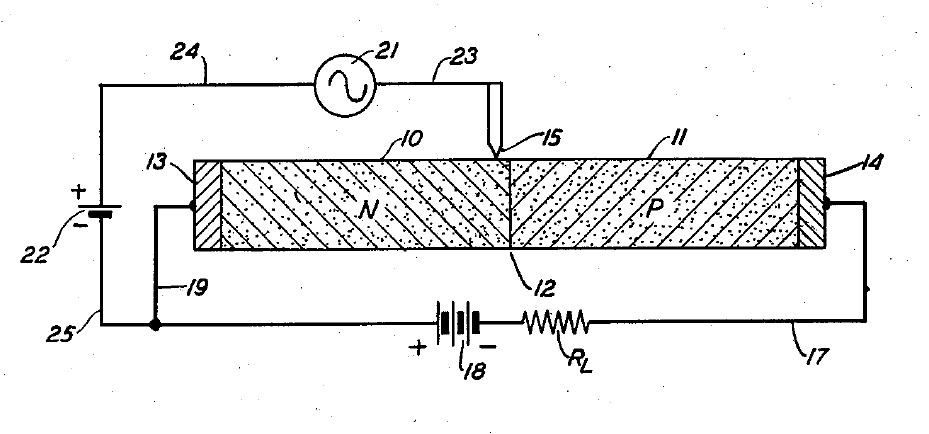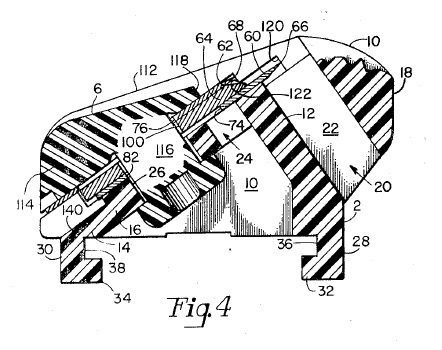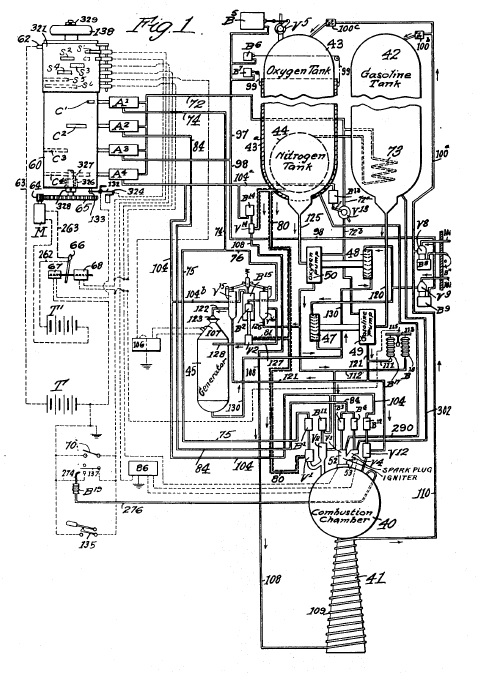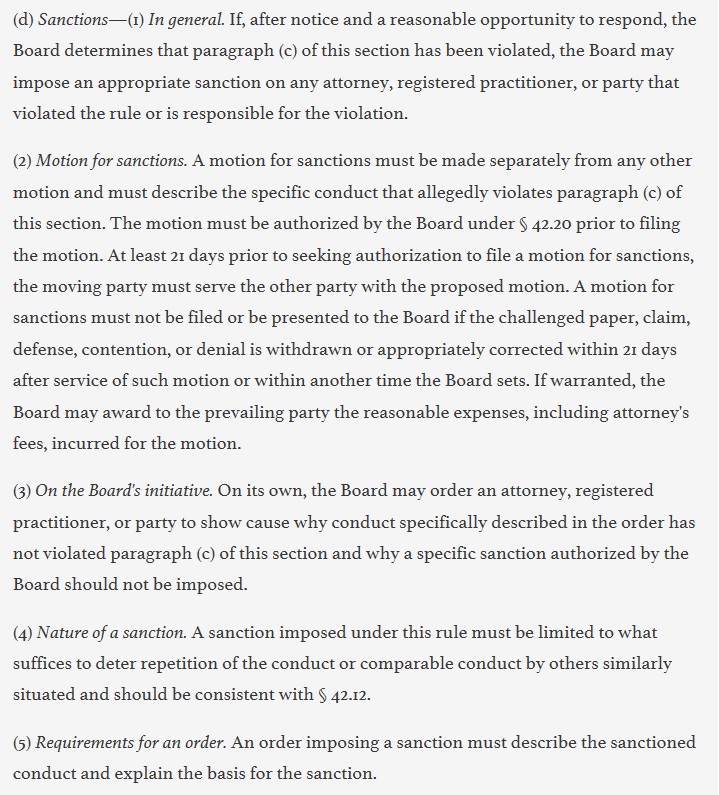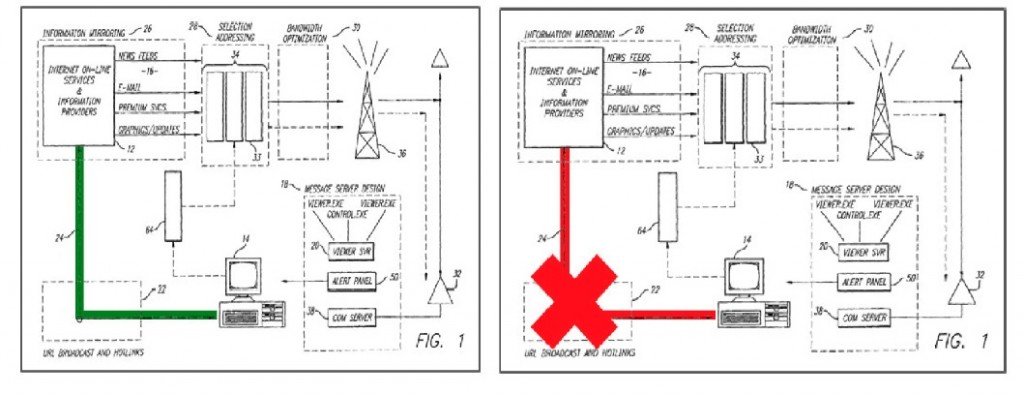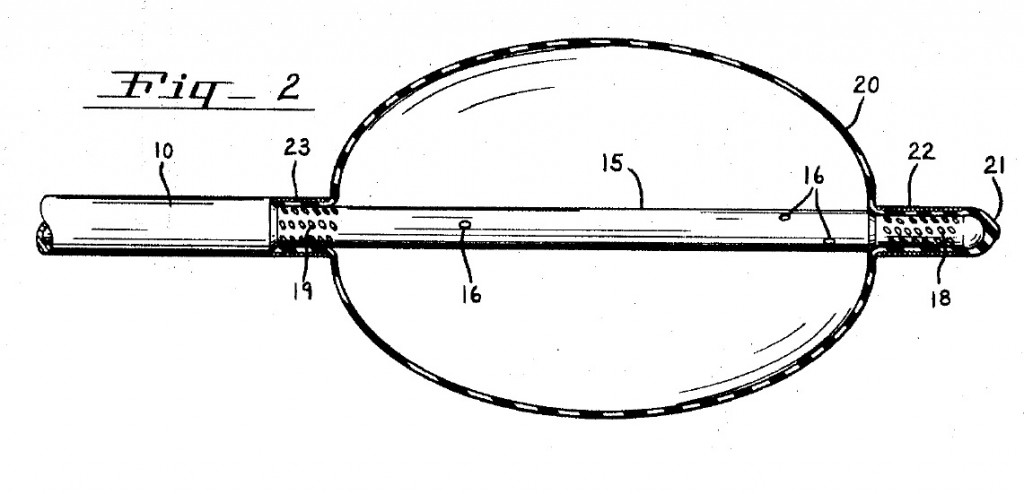All manner of boiler plate can be found in patent applications and issued patents, placed there by applicants and their counsel hoping to influence the future construction of their specification and claims, but the language in U.S. Patent No. 8,047,178, requests a “charitable and common-sensical” claim construction. Unfortunately, that’s probably too much to ask for.
Monthly Archives: April 2016
April 4 Patent of the Day
April 3 Patent of the Day
April 2 Patent of the Day
If You Want to Contest Jurisdiction, Don’t File a Counterclaim
In Microsoft Corporation v, GeoTag, Inc., [2015-1140] (April 1, 2016), the Federal Circuit affirmed the district court’s exercise of jurisdiction (although on different grounds) and affirmed summary judgment of non-infringement.
In response to suits against their customers in the Eastern District of Texas, Microsoft and Google brought a declaratory judgment action against GeoTag for a declaration that U.S. Patent No. 5,930,474 is invalid and not infringed. GeoTag filed a motion to dismiss and an answer and counterclaim for infringement of the ‘474 patent, arguing that the infringement action was a compulsory counterclaim which could not confer jurisdiction on the original declaratory judgment action. The district court, applying Third Circuit law, found jurisdiction because the counterclaim was not a compulsory counterclaim. The Federal Circuit agreed that there was jurisdiction, but applying Federal Circuit, rather than Third Circuit law, and finding jurisdiction based upon GeoTag’s counterclaim, regardless of whether or not it was compulsory. The Federal Circuit found that the district court retained subject matter jurisdiction over GeoTag’s patent infringement counterclaims pursuant to § 1338(a), such that it need not determine whether the District Court properly found that it had jurisdiction over Google’s First Amended Complaint.
PGR, IPR, and CBMPR Rules Amended Effective May 2, 2016
Sanctions!
Rule 37 CFR 42.11 has been amended to provide for sanctions against parties and attorneys:
Pages Limits
The 60 page limit for a IPR Petiton has been replaced with a limit of 14,000 words (37 CFR 42.24(a)(i), and 60 page limit of the Patent Owner Preliminary Response, and Response are likewise replaced with a 14,000 word limit (37 CFR 42.24(b)(1), (2)). The 80 page limit for a PGR or CBMPR Petition has been replaced with a limit of 18,700 words (37 CFR 42.24(a)(ii), (iii)), and the 80 page limit of the Patent Owner Preliminary Response, and Response are likewise replaced with a 18,700 word limit (37 CFR 42.24(b)(1), (2)).. These word counts do not include the table of contents, table of authorities, grounds for standing under § 42.104, § 42.204, or § 42.304, mandatory notices under § 42.8, a certificate of service or word count, or appendix of exhibits or claim listing. Where a paper is limited by a word count, the paper must include a certification as to the word count
The page limit for motions to amend is bumped to 25 pages (37 CFR 42.24(a)(vi)), as is the Petitioner’s Opposition (37 CFR 42.24(b)(d), and the reply to an opposition to a motion to amend is bumped to 12 pages (37 CFR 42.24(c)(3)).
Demonstratives
You now have to serve your demonstrative exhibits two days earlier — seven days before oral argument. 37 CFR 42.70(b).
BRI
The USPTO still insists on applying BRI to all claims, in all proceedings, except if the patent will expire within 18 months from the entry of the Notice of Filing Date Accorded to Petition, and the Patent Owner makes a timely motion. 37 CFR 42.100(b); 37 CFR 42.200(b); 37 CFR 42.300(b).
Bar Against Testimony in a Preliminary Response Removed
The bar against the submission of testimony to support a Preliminary Response has been removed. 37 CFR 42.107(c) and 37 CFR 42.207(c) have been removed. While testimony can be submitted with a Preliminary Response, any genuine issue of material fact created by such testimonial evidence will be viewed in the light most favorable to the petitioner solely for purposes of deciding whether to institute an inter partes review. 37 CFR 42.108(c); 37 CFR 42.208(c)
Preference for Giving Each Claim Term Effect Does Not Overcome Meaning Apparent from the Specification
In Simpleair, Inc. v. Sony Ericsson Mobile Communications AB, [2015-1251] (April 1, 2016), the Federal Circuit vacated the jury verdict of infringement, and remanded with instructions to enter judgment of non-infringement. At issue was the meaning of “data channel” in U.S. Patent No. 7,035,914 directed to a system and method for transmission of data.
Critical to infringement is whether a data channel was on line or off line. Google presented some compelling simple diagrams showing the meaning on-line and offline, while Simpleair maintained that the district court correctly found that a channel simply meant a path for viewing a category of information, rather than the entire connection. The Federal Circuit found the district court’s construction was “incorrect”.
The Federal Circuit noted that while “interpretations that render some portion of the
claim language superfluous are disfavored . . . [t]he preference for giving meaning to all terms, however, is not an inflexible rule that supersedes all other principles of claim construction.” The Federal Circuit reiterated that that claims must always be read
in light of the specification, and in addition must be given meaning consistent with how they would have been understood at the time of invention by a person having ordinary skill in the art.
Looking to the specification, the Federal Circuit found a PHOSITA at the time of invention would understand that a key aspect of the invention is the ability of a remote device to receive notifications even when it is not connected to the Internet by traditional means. The Federal Circuit further noted that the invention contemplates two distinct paths, which was consistent with Google’s interpretation, and contrary to the district court’s interpretation.
The Federal Circuit also rejected the argument that data channel should be construed to mean data feed, pointing out that data channel was a term added by amendment and used no where else in the specification, while data feed is a term used in the specification and claims. The Federal Circuit said the choice to use “data channel” in claim 1 rather than “data feed,” notwithstanding use of the latter elsewhere in the patent, lends further support to the conclusion that “data feed” does not carry the same meaning as “data channel.”
Under the correct construction, the Federal Circuit agreed that the claims could not be infringed, and vacated the judgment and remanded the case for entry of a judgment of non-infringement.
Four canons of claim construction contributed to the construction in this case, including (1) every word in a claim should be given effect; (2) claims must always be read in light of the specification; (3) claims must be given meaning consistent with how they would have been understood at the time of invention by a person having ordinary skill in the art; and (4) different words in the claims should be given different meanings’ Although giving effect to every word in a claim was downgraded to a “preference”.

